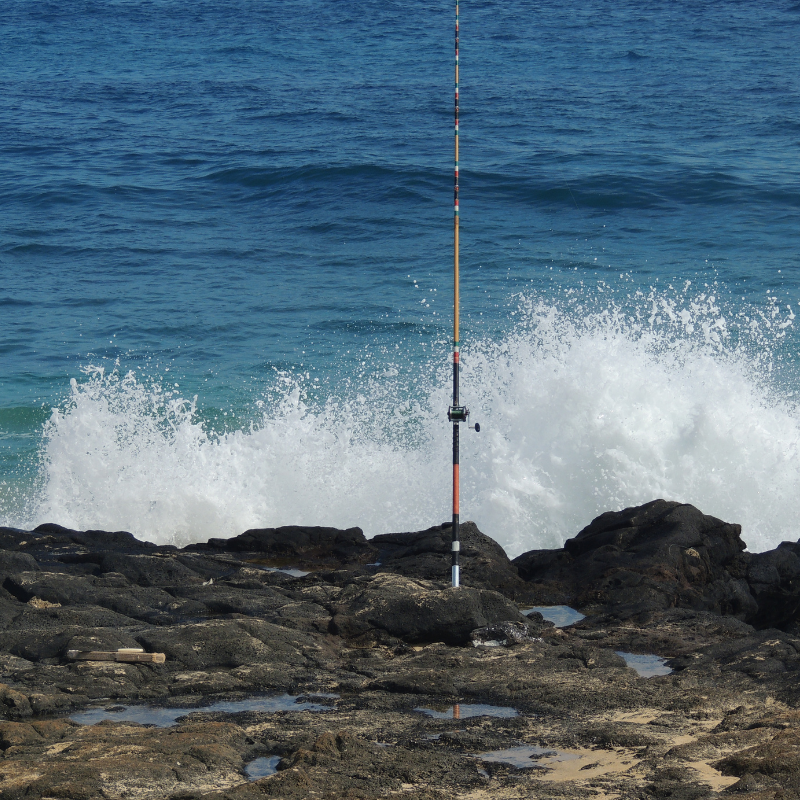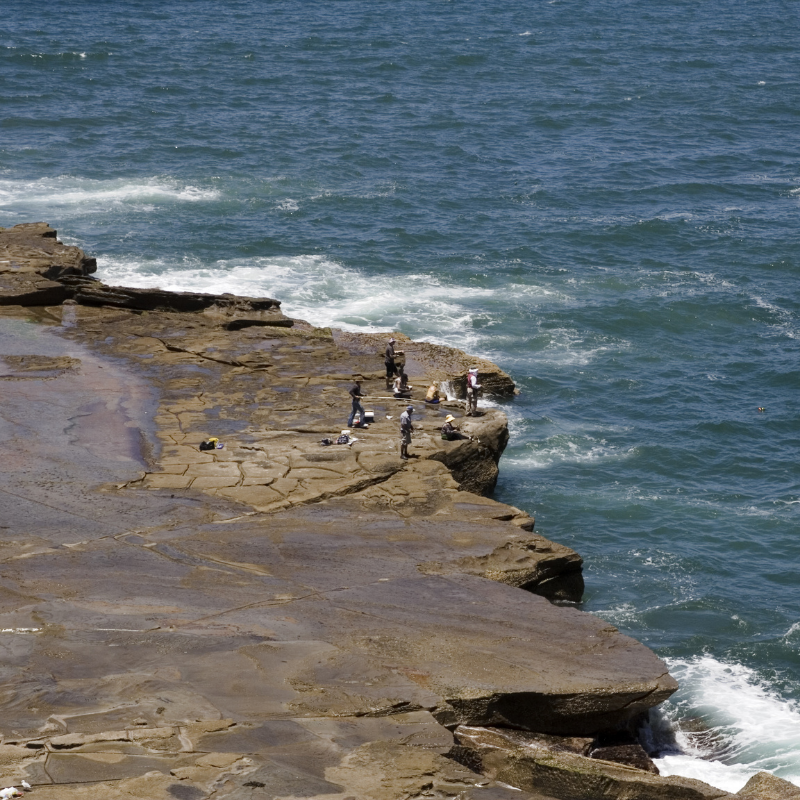ROCK FISHING BASICS
Rock fishing is a super popular hobby, because almost anyone can do it, as long as they can reach a sea shore and rent a rod. The beauty of rock fishing is that you don’t need to own a boat or live close to the ocean to do it - you can just try it out on holiday or go on rock fishing day trips and weekends. No real budget or maintenance considerations are involved, so it’s very inexpensive.
WHAT IS ROCK FISHING?
Rock fishing is fishing from rocky outcrops into a body of water (typically the ocean). It's a very well-liked hobby in Australia, the USA, and many European countries.
WHAT DO YOU USE FOR ROCK FISHING?
With the right skills, you can rock fish with just a line, a hook, and bait or lure. However, a rod will make your life easier, allowing you to cast your line further out to sea, where most fish hide. A long rod is recommended, as it gives you more control over the line when you need to free it from rock piles or weed.
Pair it with a light fishing line - something between 4.5 and 9kg (10-20lb) is ideal. However, if you’re catching bigger fish you’ll need to upgrade. Pick monofilament or fluorocarbon, which are abrasion-resistant and won’t snap when they rub against the rock. Add a leader to encourage more fish to inspect for your bait.
WHAT IS THE BEST BAIT FOR ROCK FISHING?
Simple, easy-to-find bait will do great. Small bait fish like herring, sardines, smelt, anchovies, peeled prawns, mackerel, or worms will help you catch plenty of fish.
Cut the bait into 2.5-5cm (1-2 in) pieces and place each chunk on a hook. For catching bigger fish, use the whole baitfish.
Live bait attract fish easily thanks to its smell; however, it can be hard to keep on the hook in a rocky area with churning water. Having backup lures in your kit comes in very handy.
WHAT LURES DO YOU USE FOR ROCK FISHING?
Squid, bucktail or scampi tail lures are generally good for fishing near structures. Most lures will do the job, though. Choose a 12cm (5 inch) lure in most situations. If you’re fishing somewhere deep, opt for metal lures that sink easily; while if you’re fishing somewhere shallow, choose plastic ones.
Whether you use live bait or lures, the rig and techniques you use are what makes the biggest difference.
HOW DO YOU RIG FOR ROCK FISHING?
Use a one or two-hook rig. Choose the size based on how big the fish you want to catch is. Add a weight to help the bait or lure sink - this needs to be lighter in calmer waters and heavier in rougher currents. Pick a ball-shaped sinker to reduce the risk of snags. Always couple your hook(s) with a swivel.
ROCK FISHING TECHNIQUES
The main technique to master in rock fishing is to reach the bottom quickly and to stay there while moving your bait or lure. Zig-zag movements up and down or right and left tend to attract a variety of species.
The rule of thumb is that you will feel a bite just a couple of seconds after the lure hits the bottom, so check the end of the line often.
Aim for deep water in rough conditions and whenever you are hoping to hook bigger fish. Fishing just beneath your feet will help you pull vertically when the line snags and give you better control over the bait.
ROCK FISHING SAFETY TIPS
Rock fishing can be very dangerous, if practised on heavy weather days, when waves wash onto high rocks. Falling into the water in these conditions, by a rocky shore, can be deadly.
Check the marine weather forecast, including the tides, and check the conditions in your chosen spot. If the waves are high, opt for a different place. Consider how the conditions will affect tea area over time.
Always wear a life jacket, lightweight clothing, and non-slip shoes. Never rock fish alone, so your mate (buddy) can alert the authorities if you fall into the sea. Tell a friend or family member where you’re going and when to expect you back.
Never turn your back to the ocean, so you can always watch the waves. Most importantly, don’t jump into the water after anyone. Look for a lifebuoy or floating object and throw it towards the person in the water and immediately alert the authorities.



